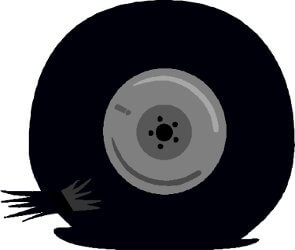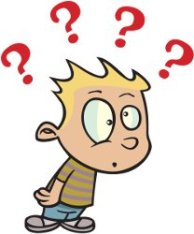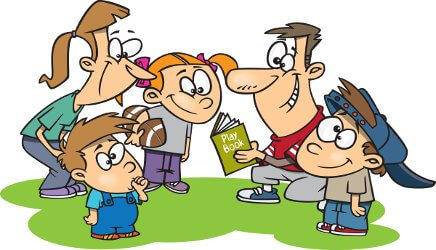Possessive Forms
Possessive forms can be confusing.
Click Here for Step-by-Step Rules, Stories and Exercises to Practice All English Tenses
Possession means that something belongs to someone. Possessive forms show ownership in the English language.
In many other languages, possession is shown by using the word "of."
Examples:
- The car of
the man

(The car belongs to the man.)
- The shoes of
the man
(The man owns the shoes.)
- The keys of
Mike
(The keys belong to Mike.)
- The legs of
the chair
(The legs are part of the chair.)
In the English language, possession is shown by using these possessive forms:
Possessive
Nouns
A) Possessive singular nouns
We form possessives from singular nouns by adding an apostrophe ( ' ) and an "s" to the end of the word.singular
noun + 's = possessive
form
Examples:
- dog = I built the dog's
house.
- man = She fixed the man's
phone.
- student = Is that the student's
book?
- girl = The girl's
doll
is broken.
- brother = My brother's
bicycle is green.
- Nick = Nick's
daughter is 6 years old.
- Jesse = Jesse's
shirt is pink.
- car = The car's tire is flat.

*Note: Singular nouns that end in "s" can be confusing. Style books do not agree on how to show ownership with singular nouns ending in "s."
Some people say to always add an apostrophe and an "s" to the end of the singular word.
Example: boss's
Other people say to only add an apostrophe to the end of the singular noun.
Example: boss'
According to most style books, either way is usually okay!
A good rule is to leave off the extra "s" if it makes the word sound confusing.
For example, these words sound okay with an extra "s":
- boss = boss's car
- Francis = Francis's house
- class = class's teacher
These words can sound confusing with an extra "s" (these are states in the United States):

- Kansas = Kansas' cities (instead of Kansas's cities)
- Massachusetts = Massachusetts' government (instead of Massachusetts's government)
B) Possessive plural nouns
We form possessives from plural nouns in two ways.1.
For regular
plural nouns that end in "s", add an apostrophe after the "s."
(Do not
add another "s"!)
This indicates ownership by more than one.



2. For irregular plural nouns that do not end in an "s", add an apostrophe and an "s" at the end of the word.
This indicates ownership by more than one.
This indicates ownership by more than one.
regular
plural noun + apostrophe
= possessive form
- singular => cat
plural => cats
The cats' food is in the bowl.
(There's more than one cat that eats the food.)
- singular => crayon
plural => crayons
I lost the crayons' box.
(There are multiple crayons in the box.)
- singular => car
plural => cars
The cars' tires were flat.
(There's more than one car with flat tires.)



2. For irregular plural nouns that do not end in an "s", add an apostrophe and an "s" at the end of the word.
This indicates ownership by more than one.
irregular
plural noun + 's =
possessive form
- singular => man
plural => men
She fixed the men's phones.
(There are multiple men with phones.)
- singular => child
plural => children
The children's parents were waiting.
(There are many children whose parents are waiting.)
- singular => person
plural => people
The people's cars were stolen.
(There were many cars that were stolen.)
You can learn more about
using apostrophes in the English language
here:
Possessive Pronouns
Possessive pronouns usually come after a noun or object.These are the possessive pronouns and the subjects they represent:
| Subject | Possessive Pronoun |
| I | Mine |
| You (singular) | Yours |
| He | His |
| She | Hers |
| It | Its |
| We | Ours |
| You (plural) | Yours |
| They | Theirs |
Examples:
- The flowers are mine.
(I own the flowers.)
- That check is yours.
(The check belongs to you.)
- That bicycle is his.
(He owns the bicycle.)
- The big dog is hers.
(She owns the dog.)
- The big nest is its.
(The nest belongs to it.)
"Its" is not very common as a possessive pronoun in the English language. It is more common to use the possessive adjective form of "its."
Example: That is its big nest.
- The television is ours.
(We own the television.)
- The cake is yours.
(You all own the cake.)
- The blue car is theirs.
(They own the blue car.)

Possessive Adjectives
Possessive adjectives are very similar to possessive pronouns. Make sure you don't confuse them.Possessive adjectives always come before a noun. They work as an adjective and modify the noun.
These are the possessive adjectives and the subjects they represent:
| Subject | Possessive Adjective |
| I | My |
| You (singular) | Your |
| He | His |
| She | Her |
| It | Its |
| We | Our |
| You (plural) | Your |
| They | Their |
Examples:
- Please hand me my
pencil.
(I own the pencil.)
- Did you bring your
book?
(You own the book.)
- I found his
dog.
(He owns the dog.)
- We mailed her
check.
(She owns the check.)
- The bird sat in its
nest.
(The nest belongs to it.)
- We painted our
house.
(We own the house.)
- Class, please sit in your
seats.
(The seats belong to you.)
- They are listening to their
coach.
(The coach belongs to them.)

You can learn more about
possessive adjectives here:
Possessive Adjectives
Possessive Adjectives
This was an overview of Possessive Forms. Now that you know them, it is time to practice: Illustrated Worksheet on Possessives Forms.
See also: Why Are Possessives Important? (Simple and Illustrated)
Get Updates, Special Offers, and English Resources
Download your FREE GIFT (the first two chapters of
English Short Stories Book and Workbook)
as soon as you join!

By submitting your email, you consent to receiving updates and newsletters from us and to the sharing of your personal data with third parties for the purposes of sending you communications. We will not spam you. You can unsubscribe at any time. For more information, please see our privacy policy.





